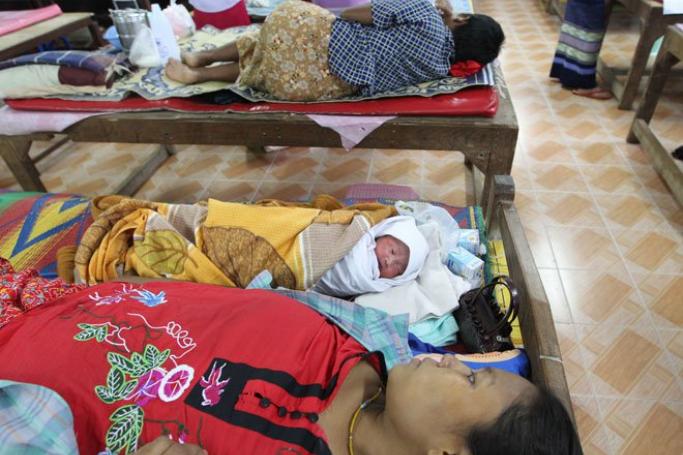A new health report focused on eastern Myanmar shows improvements in health care but puts such indicators as child mortality on a par with war-torn Somalia.
The report, “The Long Road to Recovery: Ethnic and Community-based Health Organizations Leading the Way to Better Health in Eastern Burma,” based on data from 64 townships in the eastern states, with a target population of half a million people, shows decreased rates of malaria and maternal malnutrition, and improved patterns of breastfeeding, according to the Health Information System Working Group on February 18.
However, it also reveals that infant and child mortality rates in eastern Myanmar remain higher than the country’s official figures, and are similar to other conflict-affected countries such as Somalia, reflecting the ongoing lack of protection and security despite ceasefires and large increases in humanitarian aid to Myanmar.
The survey was conducted by a network of ethnic and community-based health organizations, which, due to conflict and persecution, have developed their own primary health care service structures, outside the central government health system, through a network of rural clinics and mobile medical teams across eastern Myanmar.
Data shows that ethnic health groups are the main health care providers for these conflict affected communities. About 70 percent of respondents accessed treatment from ethnic health organizations, and just 8 percent from government facilities. When seeking health care, 75 percent of respondents had to walk to the nearest health facility, taking on average an hour and a half.
“We have a long way to go in obtaining sustainable peace,” said Dr Cynthia Maung, a co-author of the report and director of the Mae Tao clinic in the Thai border town of Mae Sot. “To respond to the health challenges facing eastern Burma we must capitalize on the existing infrastructure built by ethnic and community-based health organizations.”
The new report, based on the first large-scale health survey in eastern Myanmar since recent ceasefires, shows some improved health indicators, linked to programming of local ethnic health providers, but highlights that sustained improvements to the overall health of conflict-affected communities remain dependent on the peace and reform process, and may take decades.
You are viewing the old site.
Please update your bookmark to https://eng.mizzima.com.
Mizzima Weekly Magazine Issue...
14 December 2023
Spring Revolution Daily News f...
13 December 2023
New UK Burma sanctions welcome...
13 December 2023
Spring Revolution Daily News f...
12 December 2023
Spring Revolution Daily News f...
11 December 2023
Spring Revolution Daily News f...
08 December 2023
Spring Revolution Daily News f...
07 December 2023
Diaspora journalists increasin...
07 December 2023
Myanmar Suu Kyi supporters blocked from campaigning in Thailand












